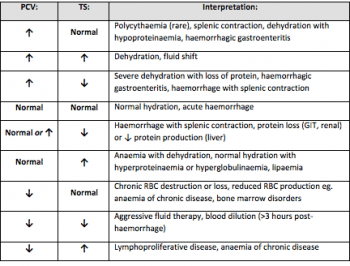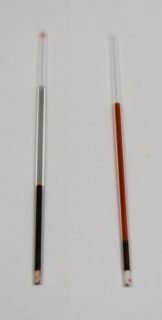The PCV and total solids (TS) test is simple, yet informative – but is often misinterpreted or underused.

It is important to remember all test results need to be interpreted in light of the patient’s history, presenting clinical signs and general physical examination findings.
The various changes that can be found on a PCV/TS, and the possible causes, are detailed in Table 1. Many of the differentials can be included or excluded based on the history, clinical signs and examination findings.
Misconceptions
I would like to highlight some common misconceptions I find with PCV/TS interpretation.
A normal PCV/TS means the patient cannot be dehydrated
The concept all dehydrated patients will have an elevated PCV/TS is inaccurate. Patients will have to be severely dehydrated to see an elevation in both PCV/TS.
Dehydration should be based primarily on physical examination findings, not based primarily on PCV/TS results.
A patient with a normal PCV could not have lost blood as the PCV should be low
Patients can have acute whole blood loss, which is not reflected in the PCV at presentation. This could have been caused by a number of reasons – for example:
- the extravascular fluid has not yet shifted down the hydrostatic pressure gradients
- the patient has not ingested water since the time of blood loss
- IV fluid has not been given to correct the hypovolaemia
Once the fluid shifts, the patient drinks water or IV fluids are administered, the PCV/TS will drop due to haemodilution.
An elevated PCV means the patient is dehydrated

This is probably the most common change I see in my patients – and it is not because they are all dehydrated.
The most common cause of this change is stress-induced splenic contraction. The spleen stores red blood cells. Under the influence of adrenalin, the smooth muscle in the spleen contracts and the stored red blood cells are pushed into circulation.
The next most common cause would be haemorrhagic gastroenteritis, where a fluid shift into the gastrointestinal tract has occurred.
Assessment of the serum colour can also provide valuable information. White or lipaemic serum can cause artifactually high TS. Haemolysed serum with a low PCV can indicate a haemolytic anaemia.
Next time you perform a PCV/TS, look at Table 1 and consider the other differentials for your results.

Leave a Reply